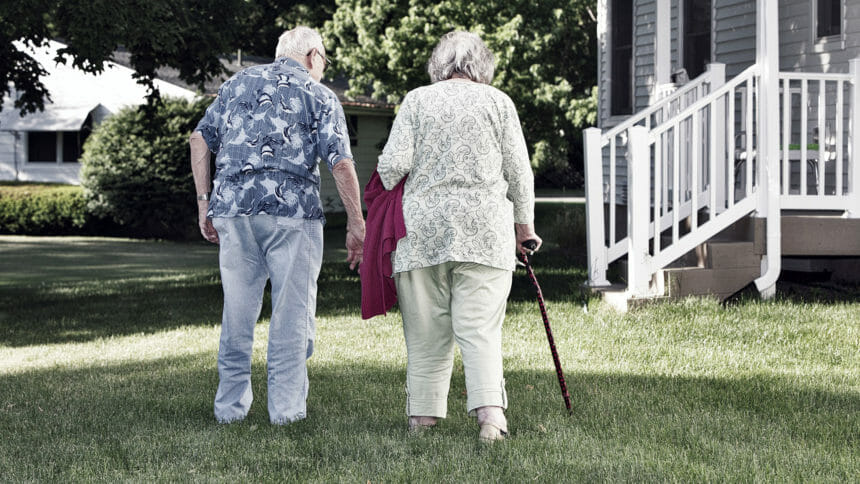
The barriers and challenges to affordable senior living are numerous.
But a New Jersey program addressing the increased health needs of low-income older adults outside of the traditional assisted living model is providing a potential model for other states to address the needs of an expanding population with increasingly complex healthcare needs.
During a Tuesday session of the National Council on Aging’s Age+Action 2020 Virtual Conference, a panel discussed how the New Jersey Assisted Living Program was developed to address the increased health and long-term care needs of low-income older adults with limited access to care through traditional, stand-alone assisted living communities.
The presenters discussed key challenges and barriers to providing assisted living to very low income older adults, how the ALP model relates to the support of complex care needs for residents living independently in publicly subsidized and public housing, how the model affects key metrics, and how the model can be scaled and replicated in other states.
Three-way partnership
The New Jersey ALP model is a three-way partnership between housing providers, the ALP provider and the older adult residents, said Candace Robinson, director of strategic aging initiatives for Capital Impact Partners, a nonprofit community development financial institution. The independent housing provider owns and manages the building separate from the ALP provider that delivers care and services to residents right where they live.
In essence, the model separates the building from the traditional assisted living model so services can be delivered in an efficient way to a difficult-to-serve population, she said.
“The ALP is a licensed assisted living package of services decoupled from the housing facility and brings [an] assisted living level of services to individuals residing in publicly subsidized housing,” Robinson said. “It’s an interesting model we hope to replicate in scale.”
Through the ALP, residents living in publicly subsidized senior housing and public housing can access fully licensed, affordable assisted living services traditionally delivered in stand-alone facilities. The ALP model links existing affordable housing with comprehensive assisted living services in an effort to improve health outcomes of high-cost, high-need residents.
The Henry and Marilyn Taub Foundation, Capital Impact Partners, Rutgers University and ALP providers are evaluating the effects of the model on health outcomes and cost, supporting a statewide ALP provider collaborative, and trying to raise awareness of the model among key stakeholders, including managed care organizations and affordable and public housing providers.
Elizabeth Davis, executive director of Geriatric Services Inc. and CEO of Bright Side Manor, an affordable assisted living community in Teaneck, NJ, said she got into the ALP business after Hurricane Sandy hit the East Coast and subsidized housing providers were calling panicked because they had frail older adults living in buildings without power.
‘Eye-opening’ visits
Davis called the home visits to local subsidized housing buildings “eye opening.” She said they saw tenants aging in place, frail, many with dementia, who had difficulty managing personal care needs, at great risk for falls, setting off smoke detectors in their apartments, but in complete denial that they needed assistance.
“We recognized that housing providers had real challenges, and they were finding themselves in a business they were not prepared to be in at all,” Davis said. “With the COVID-19 pandemic, housing providers and family members, in particular, are more aware than ever of the vulnerabilities of their tenant populations. They are realizing the benefit of having an ALP on site.”
Julia Stoumbos, director of strategic program development in the field of Aging in Place for the Taub Foundation, said the ALP program has the potential to “revolutionize aging in place.”
Care provided is based on individual needs in a manner that promotes their individuality, dignity, privacy, choice and independence, including all support with activities of daily living, intermittent nursing and medication assistance, she said.
Karen Zurlo, Ph.D., an associate professor in the School of Social Work at Rutgers University, said that an evaluation of the ALP model shows that demographic trends are driving change. The use of and expenditures on personal health services and long-term services and supports, and the prohibitive cost of nursing home care, are leading to an increased demand for home- and community-based services, she said.
The ALP model, Zurlo said, offers an array of support services to low-income older adults who live independently. Rutgers now is evaluating the model to determine reasons for low enrollment rates and to propose interventions to increase participation rates in the future.
Research shows that residents in publicly subsidized and public housing have increasing health needs as they age and experience greater health disparities. Integration and coordination of care leads to better health outcomes and quality of life for older adults, Zurlo said.
The ALP model, according to the panel, supports more effective management of complex care needs, as well as reduces premature institutionalization. Through the ALP, low-income older residents can age in the community and access higher levels of care, adding an opportunity to go beyond the traditional wraparound support services provided through service coordination or home healthcare aides.




